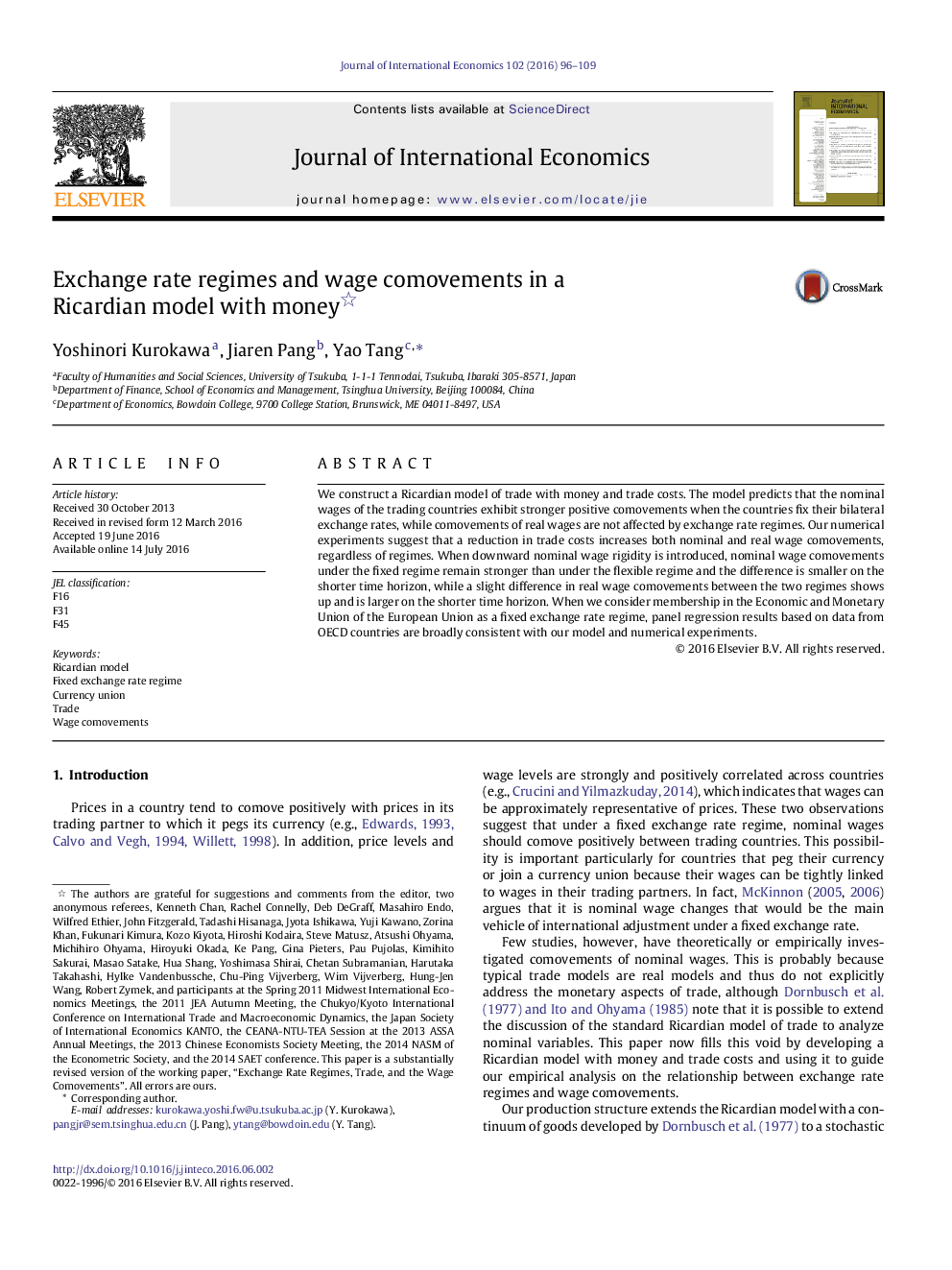| Article ID | Journal | Published Year | Pages | File Type |
|---|---|---|---|---|
| 7364017 | Journal of International Economics | 2016 | 14 Pages |
Abstract
We construct a Ricardian model of trade with money and trade costs. The model predicts that the nominal wages of the trading countries exhibit stronger positive comovements when the countries fix their bilateral exchange rates, while comovements of real wages are not affected by exchange rate regimes. Our numerical experiments suggest that a reduction in trade costs increases both nominal and real wage comovements, regardless of regimes. When downward nominal wage rigidity is introduced, nominal wage comovements under the fixed regime remain stronger than under the flexible regime and the difference is smaller on the shorter time horizon, while a slight difference in real wage comovements between the two regimes shows up and is larger on the shorter time horizon. When we consider membership in the Economic and Monetary Union of the European Union as a fixed exchange rate regime, panel regression results based on data from OECD countries are broadly consistent with our model and numerical experiments.
Related Topics
Social Sciences and Humanities
Economics, Econometrics and Finance
Economics and Econometrics
Authors
Yoshinori Kurokawa, Jiaren Pang, Yao Tang,
